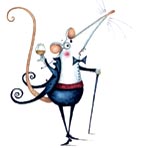Town mouse on war heroes remembered
Victoria Station has an important place in London’s history as the point of departure and return for those who fought in WW1


Living in Pimlico, my family and I are always hurrying past Victoria station. It has nothing like the glamour of St Pancras, revamped for the Eurostar, standing as a proud and dysfunctional memorial to unbridled Victorian capitalism.
Victoria was originally two stations-one for the Brighton line, the other for the London, Chatham and Dover-built next to each other in contrasting styles and materials. But it does claim a place in history as the station from which thousands of First World War soldiers left for France and to which the wounded came home.
The dead did not return; whatever their rank, soldiers were buried where they fell, their deaths later marked by identical white stone crosses. Only the Unknown Soldier came back to Victoria, on his way to Westminster Abbey. The railway van that transported him had previously carried the remains of two other heroes: Nurse Edith Cavell, shot by the Germans as a supposed spy, and ferry captain Charles Fryatt, who refused to surrender to a U-boat in 1915, ramming it instead (he was captured and shot).
Now, the van has been restored by the Kent and East Sussex Railway Society. Perhaps it could be brought to Victoria for a spell. Grosvenor Gardens, opposite the station, already has the equestrian statue of Marshal Foch.
Sign up for the Country Life Newsletter
Exquisite houses, the beauty of Nature, and how to get the most from your life, straight to your inbox.
Country Life is unlike any other magazine: the only glossy weekly on the newsstand and the only magazine that has been guest-edited by HRH The King not once, but twice. It is a celebration of modern rural life and all its diverse joys and pleasures — that was first published in Queen Victoria's Diamond Jubilee year. Our eclectic mixture of witty and informative content — from the most up-to-date property news and commentary and a coveted glimpse inside some of the UK's best houses and gardens, to gardening, the arts and interior design, written by experts in their field — still cannot be found in print or online, anywhere else.
-
 Everything you need to know about private jet travel and 10 rules to fly by
Everything you need to know about private jet travel and 10 rules to fly byDespite the monetary and environmental cost, the UK can now claim to be the private jet capital of Europe.
By Simon Mills
-
 'I'd willingly give a year of my life for a fortnight there': The green dream that is the garden of Derreen
'I'd willingly give a year of my life for a fortnight there': The green dream that is the garden of DerreenExotic woods, labyrinths of narrow, mossy paths and thousands of tree ferns make this an internationally important garden, writes Charles Quest-Ritson. Photographs by Jonathan Hession.
By Charles Quest-Ritson